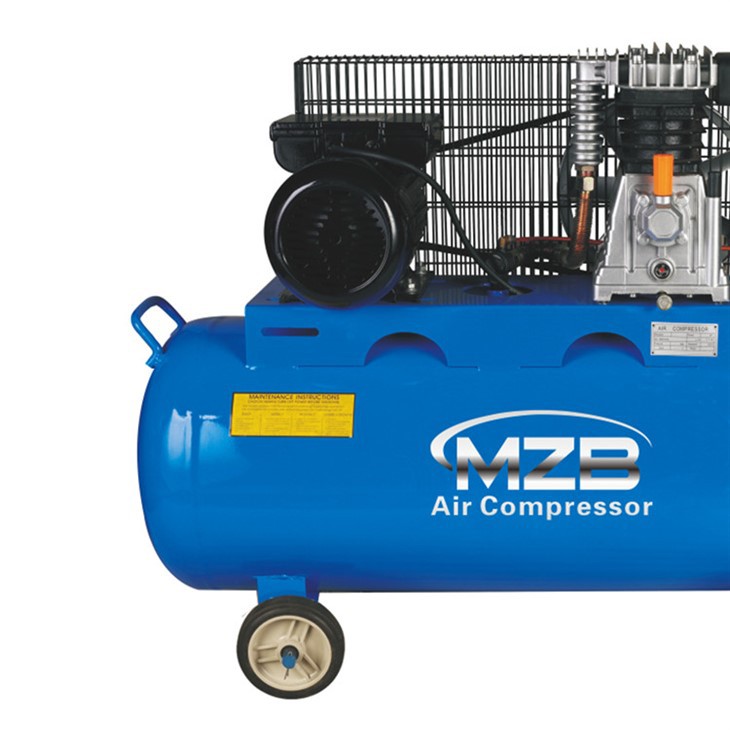Hey there! I'm a supplier of Italy Air Compressors, and today I wanna chat about one of the most important aspects of these machines: the air compression ratio.
First off, let's break down what the air compression ratio actually is. In simple terms, it's the ratio of the absolute discharge pressure to the absolute suction pressure of an air compressor. It tells us how much the air gets squeezed or compressed inside the machine.
For Italy Air Compressors, the air compression ratio can vary depending on the type and model. There are different types of compressors out there, like reciprocating, rotary screw, and centrifugal compressors, and each has its own typical range of compression ratios.
Reciprocating compressors, which are quite common, usually have a compression ratio that can range from around 3:1 to 5:1 for single - stage compressors. In a single - stage reciprocating compressor, the air is compressed in one stroke of the piston. But if you go for a multi - stage reciprocating compressor, things get a bit more interesting. Multi - stage compressors can achieve much higher compression ratios, sometimes up to 10:1 or even more. The reason for using multiple stages is to reduce the temperature rise during compression. When air is compressed, it heats up. If you try to compress it too much in one go, the temperature can get so high that it can damage the compressor components and reduce the efficiency of the machine.
Rotary screw compressors, on the other hand, are known for their continuous operation and relatively high efficiency. These Italy - made rotary screw compressors typically have a compression ratio in the range of 4:1 to 7:1. They work by two intermeshing screws that trap and compress the air as they rotate. The smooth and continuous action of the screws allows for a more consistent compression process compared to reciprocating compressors.
Centrifugal compressors are often used in large - scale industrial applications. Italy Air Compressors of the centrifugal type can have very high compression ratios, sometimes exceeding 10:1. They work by using a high - speed impeller to accelerate the air and then convert the kinetic energy of the air into pressure energy. These compressors are great for handling large volumes of air at high pressures.
Now, why does the compression ratio matter? Well, it has a huge impact on the performance and efficiency of the air compressor. A higher compression ratio means that the compressor can deliver air at a higher pressure. This is crucial in many industrial applications where high - pressure air is needed for things like pneumatic tools, spray painting, and air - powered machinery. But there's a trade - off. As I mentioned earlier, higher compression ratios also lead to higher temperatures. So, compressors with high compression ratios need better cooling systems to keep the temperature in check.
Another thing to consider is the power consumption. Compressing air to a higher ratio requires more energy. So, if you're using a compressor with a very high compression ratio, you might end up paying more in electricity bills. That's why it's important to choose the right compression ratio for your specific application. You don't want to over - spec the compressor and waste energy, but you also don't want to under - spec it and not get the performance you need.
As a supplier of Italy Air Compressors, I've seen a lot of different applications. For small - scale workshops that use basic pneumatic tools like nail guns and airbrushes, a single - stage reciprocating compressor with a moderate compression ratio might be just fine. These compressors are relatively inexpensive and easy to maintain. But for large manufacturing plants that need high - pressure air for complex machinery, a multi - stage or centrifugal compressor might be the better choice.
If you're in the market for an Italy Air Compressor, you can check out the Italy Type Air Compressor. It offers a variety of options in terms of compression ratios and types of compressors to suit different needs.
When you're looking at the compression ratio of an Italy Air Compressor, make sure to also consider other factors like the flow rate (how much air the compressor can deliver per unit of time), the duty cycle (how long the compressor can run continuously), and the overall reliability of the machine.


In conclusion, understanding the air compression ratio of Italy Air Compressors is essential for making the right choice for your application. Whether you're a small business owner or an engineer in a large industrial facility, getting the compression ratio right can save you money in the long run and ensure that your air - powered equipment works efficiently.
If you're interested in learning more about our Italy Air Compressors or have any questions about the compression ratio and which compressor is best for you, don't hesitate to reach out. We're here to help you make an informed decision and get the most out of your air compressor.
References
- Air Compressor Handbook, various industry - specific editions
- Technical manuals of Italy Air Compressor models





